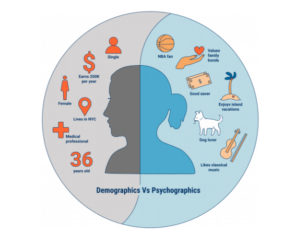
Brand Building for Build To Rent by Saurabh Saxena, Houzen
What is a brand?
Over the last year or so, Houzen have had the privilege of working with several prominent BTR operators, all of whom are concerned about their brand. When we ask “what is your brand?”, the answer I hear a lot is “Oh! We are trying to figure it out ourselves”. This article attempts to provoke some further introspection. starting with Philip Kotler’s’ perspective on “branding”:
Too many companies think that their brand building work is done when they have established a brand’s name and logo……. But they won’t mean much to customers who are uninformed. A company should not start by setting the brand’s identity. The company should start by setting the brand’s purpose. Brand purpose answers the question of what job is the brand promising to accomplish for the buyer?
Using this analogy for a prospective tenant “Joe” searching on a property portal – what would swing Joe’s decision to pick a BTR flat over a regular flat (and also pay a premium rent)? On Rightmove, most flats look the same. So (1) how does BTR differentiate its proposition, and then (2) within the BTR sector, how do operators differentiate their brand from one another? The answer lies in Kotler’s recommendation to create a brand purpose first, and then communicate it through user experience stories?
Making the Brand Different
Brands cannot be created overnight, at best you can create “top of the mind recall”. Experiences, which the BTR sector is all about, can’t be communicated through portals, emails, tube ads etc.
Let’s take an example from the Real Estate world: WeWork Vs Regus! Why does WeWork have a $35b valuation with only 1/10th the number of locations (and hefty losses) compared to Regus, which has been around a lot longer and invented the co-working concept? “WeWorkers” (and not just WeWork) swear by the “community” experience, whereas Regus is simply a good functional office space. The answers lie in economic sociology and motivation theory.
We humans have a habit of following aspirational and missionary brands as we aspire for
self- actualisation. We want to be associated with and be a part of strong experience stories. This is why we spend most on experiences, less on services and least on products. Some service (e.g. WeWork) and product providers (e.g. Apple) have been able to attach an experience to their offering. Consumers pay a premium for consuming these brands which move them closer to self-actualisation.
How to Become a Brand Powerhouse
The customer today yearns for cultural and experiential branding. This does not come from
marketing but creating and telling experience stories. It comes from a deeper understanding of
consumer psychographics, not just demographics and values rather than data.
BTR operators should spend a lot of time talking to their target demographics to understand what their values are, what they like, what they don’t and what they really want (rather than making decisions from research reports).
Brian Chesky famously went around the world for a year sleeping in shared apartments speaking with and hanging out with tenants and hosts to truly understand what guests want – he went on to create one of the most successful and counter intuitive (to common logic) businesses called Airbnb.
Next Steps for Build-to-Rent
Here are a few steps we followed that might be useful for BTR operators to build their brand:
1) Look inward. What do you want your differentiated residence experience to be? What is your
brand purpose? Why do you exist?
2) Always focus on the customer! Talk to them directly (and talk to hundreds of them) Do not
make assumptions based on research reports.
3) Identify the target tenant demographic and psychographic.
4) Find tenants fast! Fill up your buildings quickly to ease off financial pressure.
5) Expensive marketing campaigns will at best bring “top of the mind” recall. Instead, focus
on curating and communicating experiences. Create video content, make resident
communities, make them share their experiences with their friends and colleagues through
social networks. Though slower, this would be a more powerful and cheaper brand building
platform.
6) Since the proposition is an experience led one, allow potential tenants to participate in the
experiences: perhaps start hosting an Airbnb style accommodation to London based
professionals to showcase the experience.
7) Turn your existing residents into brand ambassadors. It’s the cheapest way to acquire new
customers and create a true brand based on experience stories.
8) Master influencer marketing! Brands like L’Oréal, Adidas, Volvo etc are increasingly moving
their focus towards this.
9) Don’t compete with each other – don’t be Coke vs Pepsi at a time when customers want
orange juice! Instead unite and create an industry wide campaign to educate the market.
Perhaps also pool in marketing monies!
10) Partner with innovative companies, who will challenge and improve your customer delivery.
Don’t do everything yourself, rather have a tight operational control on suppliers and just manage SLAs. Re-allocate this saved time to customer conversations and experiences i.e. your brand purpose
Build-to-Rent is the experience. Make this your mantra and say what your company can to do deliver this experience to your customers.
This is an extract from a longer article which is available here: BTR_Brand-building-Houzen

